Please excuse the rhetorical question, but cruising through old photographs I discovered a number of images that probably would not have been created had I not been visiting an art gallery looking for inspired new creativity.
It is possibly that to be a good viewer one should be prepared to work hard at studying art work that is displayed for our appreciation. This requires some concentration and reflection.
Surely that is what is required to be a creative photographer?
As a photographer I make no claims to being a reportage street photographer, but to my amazement, I occasionally return home with an image or two that sit in that genre.
Being a good viewer requires as much preparation as being a good photographer.
One needs to be “in the zone” before heading out to complete a photographic shoot as much as when one heads out to view and enjoy an art gallery excursion.
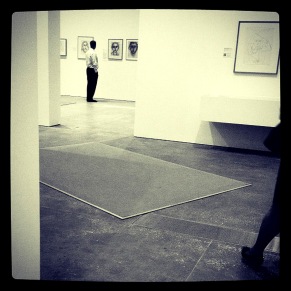
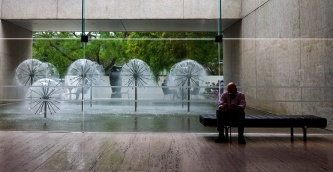
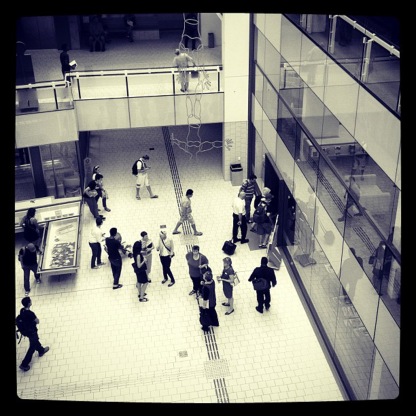
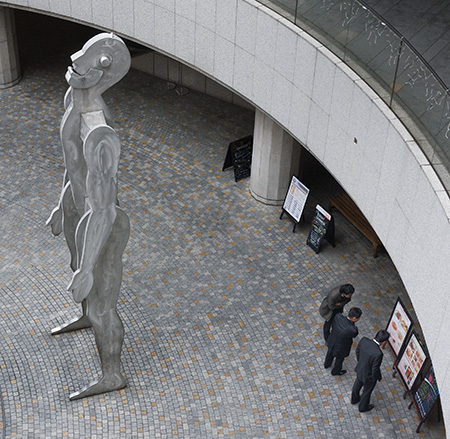
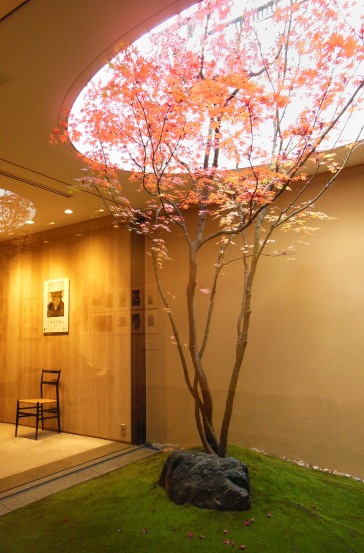
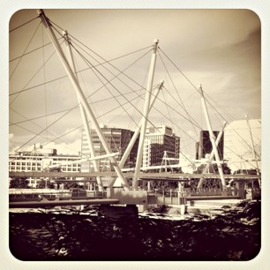
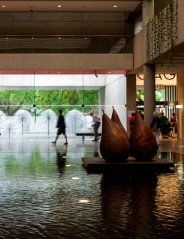
Do you think art galleries can be substituted to an extent with online portfolios of artists in high-regard, or is the dimension of print and heat of the moment crucial? I’d probably do well to look into this gallery business.
LikeLike
I agree.
Having recently returned from a break overseas where I was fortunate enough to be able to sometimes indulge myself with a visit to a ‘local’ contemporary photo gallery, and adding other visits of the past to my experience of viewing both photographic works as well as sculpture and painting, I can definitely associate a sense of inspiration, even motivation, to photograph afterwards. Whether the subject matter is the same as that I viewed or simply an idea different to any I had before but somehow inspired by it matters little to me except that the process was almost intrinsically responsible for my creativeness with my camera. The act of basically, even osmotically, as you say, reacting to what was viewed is more important than necessarily trying to copy or deconstruct the method by which the viewed works were created.
Who can really know how the subconscious absorbs and processes all around it to maybe throw up a suggestion even in the heat of the moment. I am just thankful that where ever the idea or impulse came from that the result was conceptually in my mind and literally in my hands afterwards.
The joy and mystery of creating.
LikeLike
Hardy, welcome aboard. Your comment is received with delight. Please continue to join the debate and discourse.
LikeLike
Maris, your take on the gallery context is viewed with great interest. A tad in the direction of cynical, but none-the-less carrying a weight of strong valid common sense. I suggest that in line with my very recent Blog entry, you might be described as a Lone Wolf. And probably wearing that badge with pride. Thanks for your comment.
LikeLike
A better photographer? I’d say no. A better informed photographer? Possibly yes. A more cunning player of the “art game”? Definitely yes!
The acquisitions of art museums at state and national level tend to be a compromise between the ambitions of the curator, the availability of funding, and the opacity or gullibility of the board of trustees. Exceptions include private bequests but these often moulder (if accepted at all) in the storeroom unless they endorse current fads.
I’ve had some contact with the curatorial side of things and reckon professional curators and creative photographers inhabit different universes.
The curators priorities are:
Job security: Don’t rock the boat; praise what others praise, condemn what others condemn. Buy what’s hot, shun what’s not.
Get noticed, get promoted: Organise popular exhibitions; borrow famous works.
Get funding: Schmoose millionaires, philanthropists, private companies, and government for buckets of money.
Build the collection: Buy famous pictures or promote cheap stuff to make it famous.
Advance personal status: Go to conferences, write scholarly articles for curators and academics, get cited by others in exchange for citing them.
Grasp more responsibility: If photography is too small then swell your department by absorbing videos, movies, “digital media”, photo-realist painting, drawings, works on paper, anything.
Become essential: Know where the bodies are buried, who’s bent the rules. When funding cuts come they’ll sack someone else or you will tell all.
On the other hand if you ask a curator to critically assess the aesthetic merit of a picture, say a photograph, out of context (no history, no provenance, no author) you rarely get anything of value. Telling the good ones from the bad ones is not part of the training, not part of the job description.
Imagine you are a photographer, camera in hand, in front of exciting evocative subject matter. I think the urgent decisions you make in the heat of the creative moment are not helped all by recalling what’s on the walls down at the state or national gallery.
As some wit, possibly a Native American, put it: making photographs is like buffalo hunting; exciting, dangerous, and productive. Looking at gallery walls is like reading the dung after the herd has passed.
LikeLike
Ian, I agree with you that wandering through an art gallery can provide inspiration for photography and not just while there, but later when you think about the paintings/sculpture etc that got you excited. I would like to know if you have taken photographs later that have been inspired by memorable art!
LikeLike
Good comment Jan. Probably by osmosis, I am influenced by observed art. I don’t go out deliberately to mimic what I have seen – well not for 30 years or more! I am now more attuned to what I have seen over years of research and it probably is minutely reflected in what I now do. Thanks for entering the discussion.
LikeLike